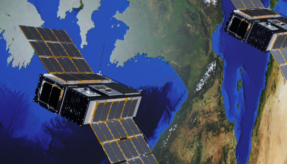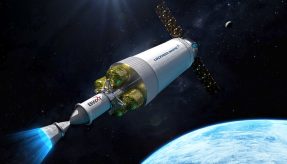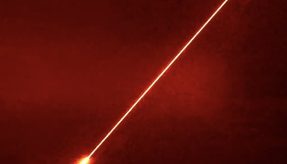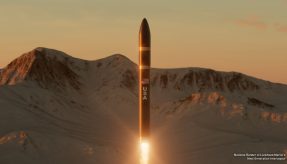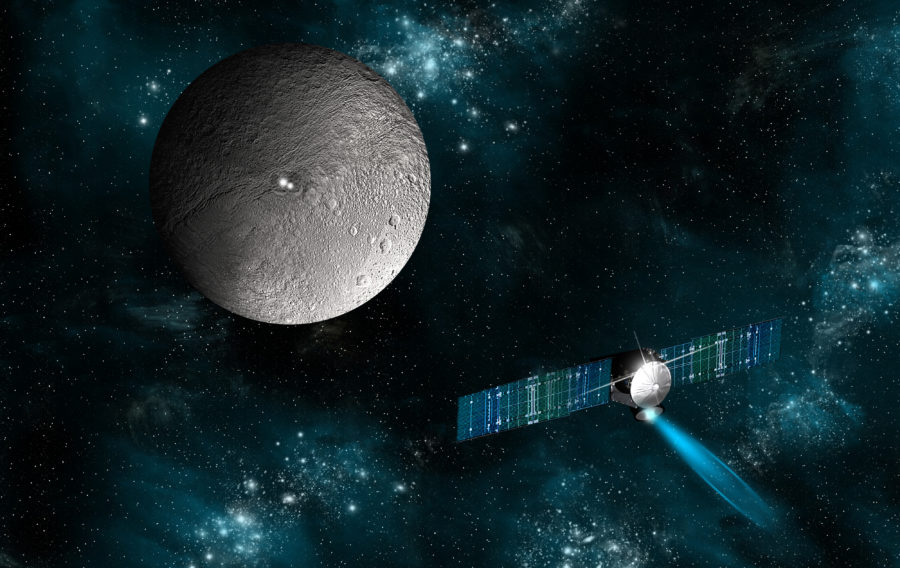
In this feature John Baker, Head of Global Operations for the National Security and Resilience and Event Horizon Consortium; Mitch Hunter Scullion, CEO of the Asteroid Mining Corporation; and Luke Deamer, MESci (Hons) Geology; examine asteroid mining and what the future holds for the UK space sector.
Asteroids are the minor planets of the inner Solar System including those co-orbital with Jupiter. There exist millions of asteroids, which are thought to be the shattered remnants of planetismal bodies within the young Sun’s solar nebula that never grew large enough to become planets.
The vast majority of known asteroids orbit within the main asteroid belt located between the orbits of Mars and Jupiter, or are co-orbital with Jupiter (the Jupiter trojans). However, other orbital families exist with significant populations, including the near earth orbits.
Individual asteroids are classified by their characteristic spectra, with the majority falling into three main groups: C-Type, M-Type, and S-Type. These were named after and are generally identified with carbon rich, metallic and silicate (or stony) compositions respectively.
The sizes of asteroids varies greatly. The first and largest asteroid ever to be discovered was Ceres by Giusseppe Piazzi at Palermo Astronomical Observatory on 1 January 1801,which is almost 1,000 kilometres (625 metres) across and composed of rock and ice. Incredibly, it is estimated to comprise approximately one-third of the mass of the entire asteroid belt. It is also the only object in the asteroid belt known to be rounded by its own gravity.
In January 2014, emissions of water vapor were detected from several regions of Ceres. This was unexpected because large bodies in the asteroid belt typically do not emit vapor, a hallmark of comets.
On 6 March 2015, the robotic NASA spacecraft Dawn entered orbit around Ceres. Pictures with a resolution previously unobtainable were taken during imaging sessions starting in January 2015 as Dawn approached Ceres, showing a cratered surface and implying possible cryovolcanic origin.
On 9 December 2015, NASA scientists reported that the bright spots on Ceres may be related to a type of salt, specifically a form of brine containing magnesium sulfate hexhydrite (MgSO4·6H2O). The spots were also found to be associated with ammonia-rich clay.
In June 2016, near-infrared spectra of these bright areas were found to be consistent with a large amount of sodium carbonate ( Na2 CO3 ), implying that recent geologic activity was probably involved in the creation of several bright spots.
Finally, in July 2018, NASA released a comparison of physical features found on Ceres with similar ones present on Earth.
Deep Earth: A window into deep space
In order to understand what is above us in deep space, it seems almost paradoxical that scientists would look down at our own planet. Yet the Earth’s crust offers one of the best insights into the composition of asteroids and other planets. Therefore, geologists have been delving into special sites around the world to discover new frontiers in space exploration.
Perhaps the best example of this approach to astrogeology is the hunt for Martian landscapes right here on the surface of the Earth. Researchers found that the classic red sands that cover a large proportion of Mars are nearly identical to deserts sands in Arizona and Hawaii. This means that Airbus and their partners have been able to recreate the surface of Mars in a warehouse in Stevenage. This facility, now open to the public, is used as a test centre for the European Space Agency ExoMars rovers. Images sent back from the Mars Curiosity Rover also show fossilised ripple marks created by past rivers, just as we see preserved across the UK.
Closer to home, the famous moon rock brought back from the Apollo missions is a type of basalt – the same rock that forms natural monuments like the Giants Causeway.
Recent discoveries in Oman have also found microbes living as deep as 400 metres in the crust, surviving extreme temperatures and pressures within solid rock. These organisms survive by chemosynthesis, breaking down minerals within the rock to produce the water and nutrients they require, rather than relying on carbon dioxide and water in the atmosphere. This has given hope to planetary geologists that there may be life beneath the surface of rocky planets like Mars.
But these discoveries do more than just further our scientific understanding. Finding a viable source of water on other planets/asteroids, where there are extreme temperatures and often little to no atmosphere, is essential for fuelling space transport and potential future habitation.
More interestingly, improving our understanding of the Earth’s lower crust has opened the possibility of space mining for nickel, platinum group and rare earth elements. These elements, used in rechargeable batteries, electronic devices, lasers and super magnets, are found throughout Earth’s crust but are rarely concentrated sufficiently to be mined.
The Earth’s mantle and outer core are thought to concentrate these valuable metals, but these have proved unreachable. This is where asteroids represent an opportunity. Nickel-iron asteroids, known as ‘M-type’ asteroids, represent a massive opportunity to sample the metal-rich cores of former planets.
Unlike other asteroid types that form by accretion, just one 500 metre wide M-type asteroid could contain 175% of the global platinum output (MIT mission, 2016).
As Chris Lewicki of Planetary Resources asserts: “Whether it’s the air we breathe, the water we drink, the materials that we build things with or ultimately, of course, the food that we eat… all of these things are available to us on this planet, but when we head into space we have to bring all of it with us. That of course, isn’t very scalable.”
NASA states that, in the 21st century, space exploration will be reliant upon what we can mine in the cosmos: “The metals and minerals found on asteroids will provide the raw materials for space structures, and comets will become the watering holes and gas stations for interplanetary spacecraft.”
Governments and private companies are already working on related laws and projects, turning science fantasy in to science fact. Yesterday’s vision becoming today’s reality.
Luxembourg recently established a €220 million fund for space mining projects: “Our aim is to open access to a wealth of previously unexplored mineral resources on lifeless rocks hurtling through space, without damaging natural habitats,” the nation’s Economy Minister Etienne Schneider said in a statement.
The United States has also signed the Commercial Space Launch Competitiveness Act into law (which recognizes the right of US citizens to own asteroid resources); and private companies to help humanity mine the cosmos.
In the United Kingdom, the Asteroid Mining Corporation Ltd is seeking to drive forward awareness across the international community, UK government, the commercial sector and through the Event Horizon Programme, working with major systems integrator Sopra Steria to create platforms upon which UK Space Innovation (UKSI) can sit.
NASA has identified some 1,500 asteroids that it has described as ‘easily accessible’, with rapid advances in technology and robotics having brought a space-based, industrial-scale operation into the realm of feasibility,
In addition, ESA has elaborated on its vision for a multinational “research village” on the Moon – a project to potentially replace the International Space Station for use as a base for mining, and stopover for probes heading deeper into space.
On October 3rd 2018, the Japanese spacecraft Hayabusa 2 landed the European MASCOT ( Mobile Asteroid Surface Scout) probes on the surface of Asteroid Ryugu.
Mitch Hunter Scullion, asteroid mining entrepreneur and CEO of AMC Ltd, said: “In the UK we stand ready to engage forcefully with this emerging sector; as a frontrunner for innovation, technological brilliance and cross party political commitment and determination required to succeed in the race towards the edge of a new horizon in space exploration and mining.”
If you would like to join our community and read more articles like this then please click here.



